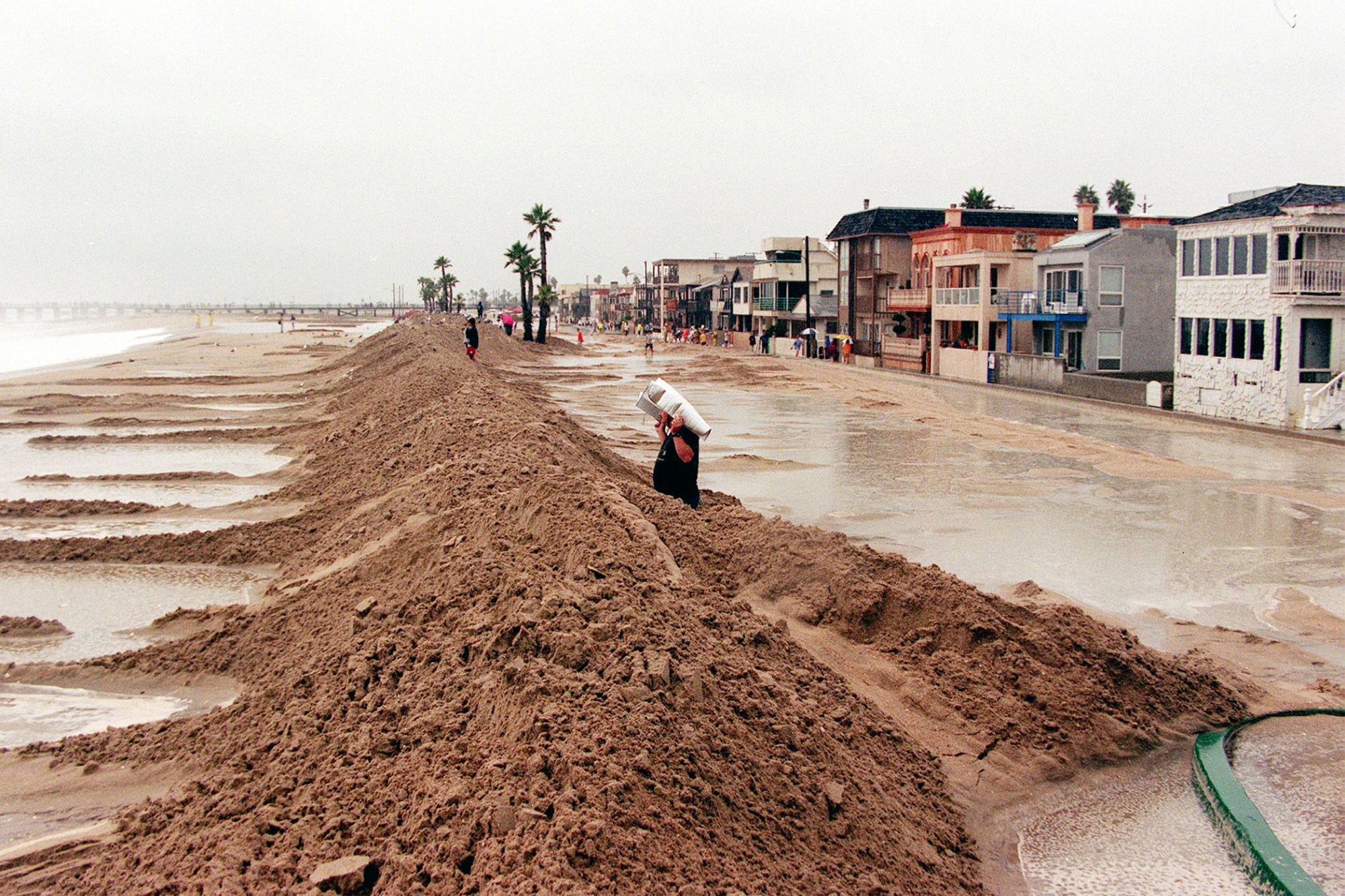It’s a tough thing to imagine when the summer sun is shining and you’re making plans for the beach or the pool, but Californians should be planning for an onslaught of water that’s predicted to hit their homes this winter.
We know, we know—it’s August, and California is in a drought. But meteorologists say a massive El Niño is forming—one that might be even stronger than the 1997 storm pattern that caused epic flooding and landslides. The time to prepare is now.
Since it’s hard to pinpoint when the bad weather will start, it’s a good idea to get ahead of the event and begin waterproofing your home, says Garbiel Lugo, franchise operations director of 911 Restoration, a nationwide business that specializes in water-damage repair. Here’s how:
Check the roof
“You don’t have to risk life and limb,” Lugo says. “Just take a look from the ground.” You’re looking for misalignment in the roof—shingles that look bent or deteriorated, or are missing altogether. Keep an eye out for wave-shaped patterns in tile, which can be a sign of warping.
Cover your turbine vent
Specific covers for these rooftop vents can be bought for cheap at hardware stores, but you can also use a trash bag and duct tape to prevent excess rainwater from pushing through, Lugo says.
Inspect the gutters
Clogged gutters are “the No. 1 issue when it comes to water intrusion,” Lugo says. Grab a ladder or call a handyman and make sure they are clean of debris. Do the same for any drain grates and drainage systems.
Check your home’s drainage system
After it rains, take a walk around the outside and check the ground where the soil meets your house. You’re looking for spots that look soggy—an indication of pooling water. Use your finger to check for waterlogged areas.
If you do find waterlogging, you can dig a trench and lay a pipe, directing the water to a safe area. Or you can monitor the area when it rains heavily. If the water is pouring down from a particular spot, use a large basin or garbage can to catch the water, and keep an eye on it. It’s not a permanent solution, but it can do in a pinch.
Reinforce single-pane windows
Single-pane windows can only handle a certain amount of water around the edges before they leak, so use painters tape or duct tape to seal the sides, Lugo says.
Check your decks
Decks can be expensive to repair, so look for hairline cracks, bubbles, exposed metal, and exposed nail holes, says Niki Bossonis, director of marketing at WICR Waterproofing and Decking. She says most waterproofing companies will perform an inspection for free. While you’re at it, check electrical outlets for cracks and exposure to the elements.
Check your basement for mold spots
Mold can only thrive where it’s moist, so patches of mold may be indicative of a leak.
Consider a sump pump—and a big one, too
“Sump pumps will only pump out X amount of water per hour,” depending on the model, Lugo says. “Always, without a doubt, go double over [what you think you need], because it will be able to keep up with the water coming in.”
Stock up on sandbags
If you’ve experienced flooding or you know you’re in a flood-prone area, be safe and buy some sandbags for leak-prone areas like doorways. To keep water out, stack the sandbags 1 foot to 1-1/2 feet high. Use two or three, minimum.
Have an exit strategy
Sometimes, no matter how much you prepare, you may need seek shelter elsewhere. Plan ahead so you know which items you will want to take with you and which items you can leave.
“Water is a powerful thing,” Lugo says. “When it wants to go, it’ll pretty much push through anything to get there.”
And remember: El Niño is nothing to mess with.
—-
Originally posted by Craig Donofrio for Realtor.com
Photo: MIKE NELSON/AFP/Getty Images






